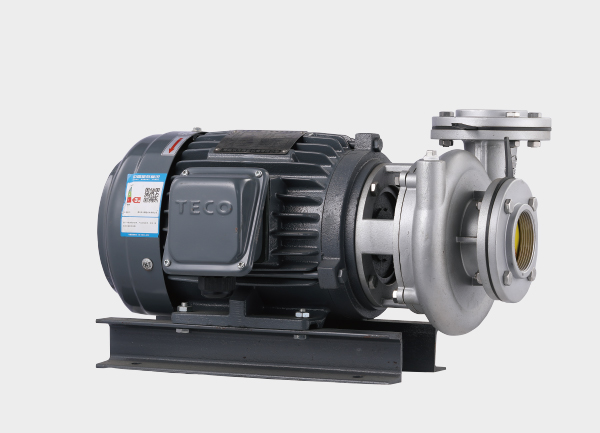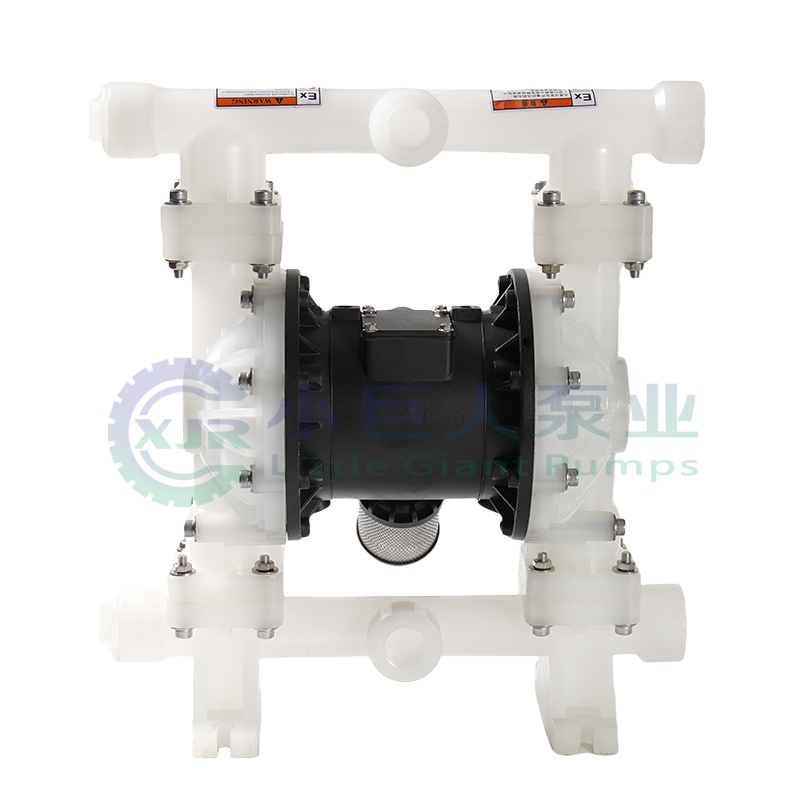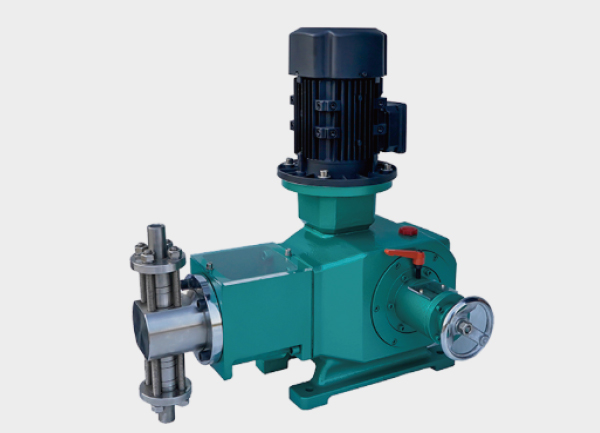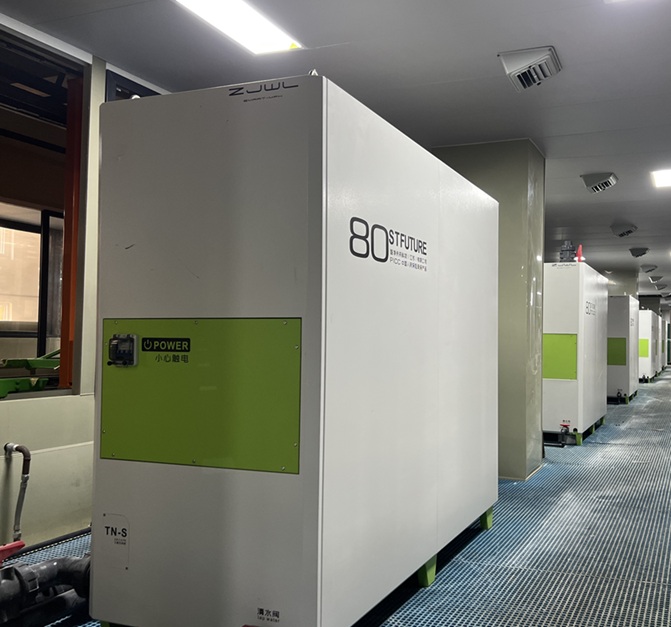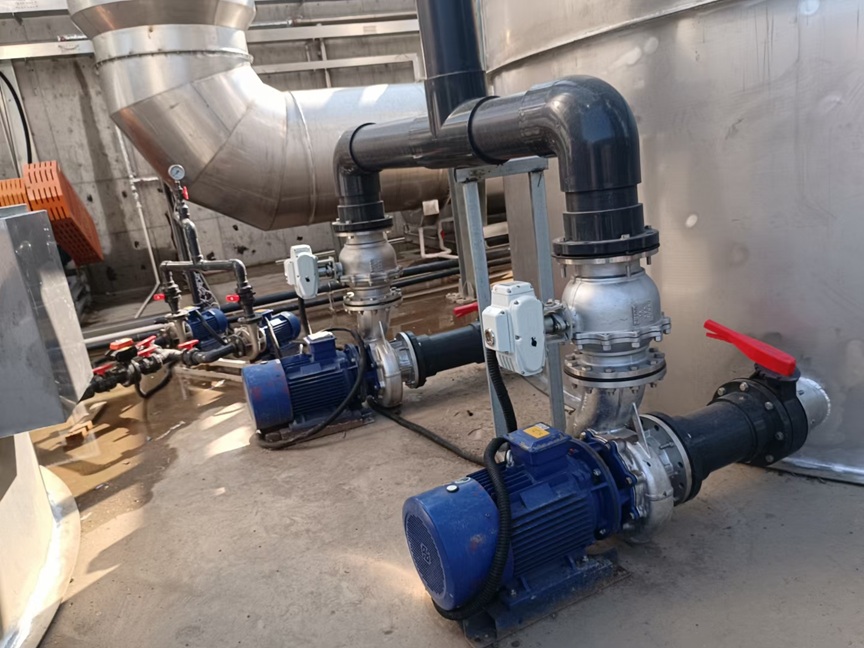A plastic magnetic drive pump combines the corrosion resistance of engineered plastics with the leak-free performance of magnetic coupling technology. It is widely used in chemical, environmental, pharmaceutical, and food industries — particularly suitable for handling corrosive, toxic, flammable, explosive, or high-purity liquids.
This article explains its working principle and core advantages in detail.
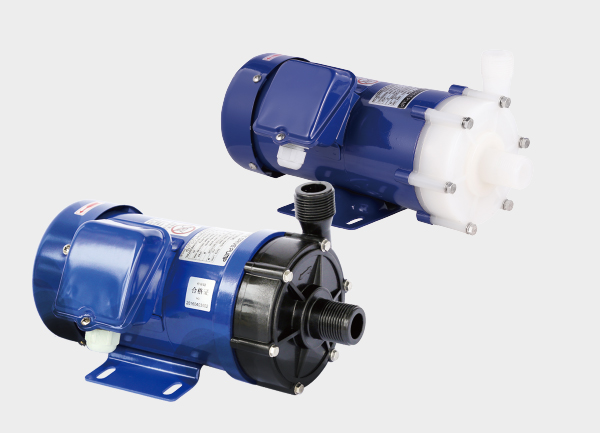
1. Working Principle — “Non-Contact” Magnetic Coupling Transmission
The plastic magnetic drive pump operates through a magnetic coupling system that transmits torque without direct mechanical contact, completely eliminating the need for a traditional mechanical seal (the primary source of leakage in conventional pumps).
1.1 Main Components
Plastic Pump Casing and Cover:
Made of high-performance plastics such as PP (Polypropylene) or PVDF (Polyvinylidene Fluoride), ensuring excellent chemical resistance. All wetted parts — including the impeller and internal magnet encapsulation — are corrosion-proof.Inner Magnetic Rotor:
Rigidly connected to the impeller and enclosed within the pump chamber. It contains strong permanent magnets (e.g., NdFeB or SmCo), providing powerful and stable magnetic force.Outer Magnetic Rotor:
Connected to the motor shaft, positioned outside the isolation sleeve. It transmits torque to the inner rotor through magnetic field coupling.Isolation Sleeve:
A static barrier made of high-strength, non-magnetic material (plastic or stainless steel). It completely separates the pumped liquid from the motor, creating a sealless, leak-proof chamber.Impeller:
Driven by the inner rotor, it imparts kinetic energy to the fluid, enabling suction and pressure discharge.
1.2 Transmission and Flow Process
Motor Activation: The motor rotates the outer magnetic rotor at high speed.
Magnetic Coupling: The outer rotor’s magnetic field passes through the isolation sleeve and drives the inner rotor synchronously — without any physical contact.
Fluid Transfer: The impeller, attached to the inner rotor, generates centrifugal force that draws liquid into the inlet and discharges it under pressure.
Leak-Free Operation: Since no rotating shaft penetrates the pump casing, liquid cannot escape, ensuring absolute containment.
1.3 Magnetic Coupling Principle
The magnetic field penetrates non-magnetic materials (e.g., plastic, stainless steel) with minimal loss.
Synchronous rotation between inner and outer rotors ensures high efficiency (≥95%) and prevents energy loss due to slippage.
2. Core Advantages — Dual Benefits of Plastic + Magnetic Drive
The superiority of a plastic magnetic drive pump lies in the synergy between corrosion-resistant materials and sealless magnetic transmission, solving key problems found in conventional pumps.
2.1 Outstanding Corrosion Resistance
Material Strength: PP and PVDF offer excellent chemical resistance to strong acids (HCl, H₂SO₄), alkalis (NaOH), and solvents (methanol, ethanol).
No Rust or Contamination: Unlike metal pumps, they don’t corrode or leach ions, ensuring long-term purity and durability.
✅ Ideal for: Chemical transfer, electroplating, wastewater treatment, and acid/alkali dosing.
2.2 Absolute Leak-Free Safety
Static Seal Only: The isolation sleeve replaces all dynamic seals, eliminating leakage points.
Environmental & Safety Benefits:
Safely handles toxic fluids (e.g., cyanides, pesticides) without risk to operators.
Prevents fire/explosion when pumping flammable liquids (e.g., ethanol, gasoline).
Reduces loss when transferring expensive or sensitive materials (e.g., pharmaceutical intermediates).
2.3 Low Maintenance and Long Service Life
Few Wear Parts: No mechanical seal or shaft bearings to replace frequently.
Extended Lifespan: Magnetic coupling involves no friction, and plastic parts resist chemical wear — resulting in 2–3× longer service life than traditional pumps.
Reduced Downtime: Minimal maintenance suits continuous industrial operation.
2.4 Smooth, Quiet Operation
No Mechanical Contact: Virtually eliminates vibration and frictional noise.
Low Noise Level: Typically below 60 dB, creating a quieter workspace — ideal for pharmaceutical and food plants.
2.5 High Safety and Purity
Protection Systems: Some models feature dry-run and demagnetization protection, automatically shutting down the pump if it overheats or runs without liquid.
Purity Assurance: Chemically inert plastic components ensure no contamination, suitable for GMP-compliant pharmaceutical and food-grade applications (e.g., purified water, juice, sauces).
2.6 Broad Application Flexibility
Fluid Compatibility: Suitable for corrosive, toxic, flammable, explosive, or high-purity liquids, as well as water and light slurries (solid particles <0.1 mm).
Performance Range:
Flow rate: 0.5–200 m³/h
Head: 3–50 m
Temperature: –20°C to 120°C (higher with PVDF)
3. Key Considerations for Selection and Use
Avoid Dry Running: Always ensure the pump is primed; lack of fluid can overheat and demagnetize the rotor.
Pre-Filter the Fluid: Use filters if solids exceed 0.1 mm to prevent abrasion.
Check Temperature and Pressure Limits: Plastic materials have limited heat and pressure resistance (typically <1.6 MPa).
Conclusion
The plastic magnetic drive pump offers a powerful combination of zero leakage, chemical resistance, and low maintenance, making it the preferred choice for transferring hazardous or high-purity fluids.
With its superior safety, durability, and clean operation, it plays a critical role in modern chemical processing, environmental engineering, and pharmaceutical production — where reliability and purity are non-negotiable.


